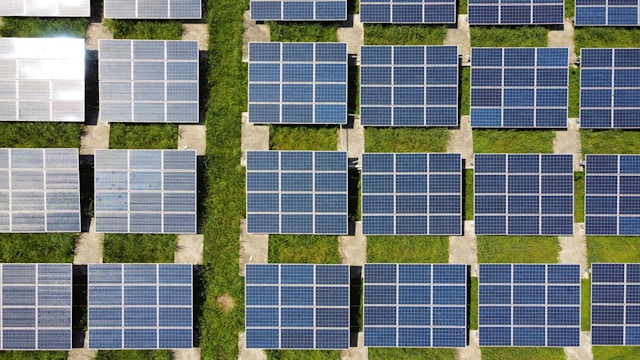Considering a panel solar para casa setup? You’re on the right track! Harnessing solar power isn’t just a trend—it’s a smart, sustainable choice that slashes energy bills, shrinks your carbon footprint, and puts you in control of your home’s power needs. But where do you start? Let’s simplify the journey!
This guide cuts through the clutter, offering clear insights into how solar works, how to pick the perfect system, and why this investment pays off. Spoiler alert: It’s easier than you think. Ready to explore? Let’s dive in!
Understanding Solar Panels: The Basics
Let’s kick things off with the essentials. Solar panels, or paneles solares for the Spanish-savvy, are designed with photovoltaic (PV) cells that transform sunlight into usable electricity. Here’s the breakdown:
How It All Comes Together
- Sunlight to Electricity: PV cells absorb sunlight, creating direct current (DC) energy.
- Inverter Magic: Since homes run on alternating current (AC), an inverter converts DC to AC, powering everything from your AC unit to your coffee maker.
- Net Metering Perks: Excess energy? Send it back to the grid! Many utility companies offer credits, trimming your bills further.
Why Go Solar? Top Benefits for Homeowners
Still on the fence? Here’s why a panel solar para casa is a game-changer:
1. Slash Monthly Bills
Solar energy is free once your system is up. Even in partly cloudy regions, modern panels efficiently capture sunlight, leading to noticeable savings.
2. Boost Home Value
Homes with solar installations sell faster and at higher prices. It’s like upgrading your kitchen—but with better ROI!
3. Eco-Friendly Power
Ditch fossil fuels! Solar reduces CO2 emissions, helping combat climate change. Every kilowatt-hour generated is a win for the planet. 🌱
4. Energy Security
Pair panels with a battery backup, and blackouts become a non-issue. Keep lights on during storms or grid failures.
Choosing Your Solar Setup: A Step-by-Step Plan
Not all systems are created equal. Follow these steps to find your ideal match:
Step 1: Crunch Your Energy Numbers
Review past electricity bills to gauge your monthly kWh usage. This determines the system size needed.
Step 2: Prioritize Quality Panels
Opt for panels with high efficiency (18%+) and warranties of 25+ years. Brands like SunPower or LG are top picks for durability.
Step 3: Consider Storage Solutions
Solar batteries (like Tesla Powerwall) store surplus energy for nighttime use. While optional, they maximize energy independence.
Step 4: Vet Your Installer
Choose certified professionals with stellar reviews. Get multiple quotes, but prioritize expertise over lowball prices.
Breaking Down Costs: What to Expect
Let’s talk numbers—transparently.
- Upfront Cost: 15,000–25,000 for an average home (before incentives).
- Tax Credits: The U.S. federal tax credit covers 30% of costs. State rebates may sweeten the deal.
- Long-Term Savings: Most homeowners break even in 6–8 years, followed by decades of nearly free energy.
Budget Tip: Financing options (loans, leases) can ease upfront burdens. Ask installers about flexible plans!
Is a Panel Solar para Casa Right for You?
Solar shines brightest if:
- Your roof gets 4+ hours of direct sunlight daily.
- You’re tired of volatile utility rates.
- You plan to stay in your home long-term.
If your roof isn’t ideal, explore ground-mounted systems or community solar programs.
Take the Leap Toward Solar Independence
There’s never been a better time to embrace solar. With falling costs, rising efficiency, and generous incentives, a panel solar para casa isn’t just an eco-statement—it’s a financially savvy move.
Ready to harness the sun? Connect with a trusted installer for a personalized quote. Your future self (and wallet) will thank you! ☀️
FAQ’s
- How much do solar panels save?
50–90% on bills. Tax credits and net metering boost savings. Pays off in 6–8 years. - Do I need a solar battery?
Optional but recommended. Stores extra energy for outages. Adds cost but ensures 24/7 power. - What if my roof has shade?
Yes! Ground mounts or community solar. Shade-friendly tech like micro-inverters can help. - How long do panels last?
25–30 years. Panels lose 0.5–1% efficiency yearly. 25-year warranties cover performance. - Are financing options available?
Yes! Loans, leases, PPAs. Federal/state incentives lower costs. Many $0-down options.
